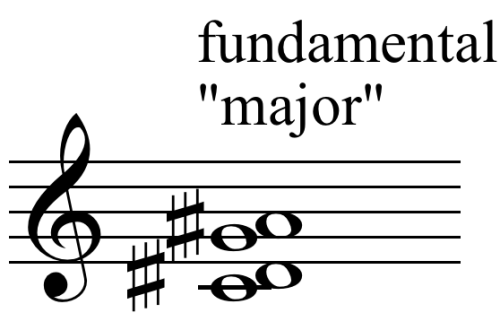
Pentatonic
Contents
What modes are popular in Asian (especially Japanese) folk music?
In addition to the seven-step sound series, the five-step series are quite widespread. They will be discussed in this article.
Pentatonic
The pentatonic scale is a scale consisting of 5 notes within one octave. There are 4 types of pentatonic scales:
- Non-semitone pentatonic. This is the main form and, unless otherwise specified, this is the type of pentatonic. The sounds of this type of pentatonic scale can be arranged in perfect fifths. Only 2 types of intervals are possible between adjacent steps of a given scale: a major second and a minor third. Due to the absence of small seconds, the pentatonic scale does not contain strong modal gravity, as a result of which there is no tonal center of the mode – any note of the pentatonic scale can perform the functions of the main tone. The non-semitone pentatonic scale is very common in the folk music of the countries of the former USSR, in the rock-pop-blues music of European countries.
- Semitone Pentatonic. This species is widespread among the countries of the East. Here is an example of semitone pentatonic scale: efgg#-a#. The intervals ef and gg# represent small seconds (semitones). Or another example: hcefg. The intervals hc and ef are small seconds (semitones).
- Mixed pentatonic. This pentatonic scale combines the properties of the previous two pentatonic scales.
- Tempered Pentatonic. It is an Indonesian slendro scale, in which there are no tones or semitones.
The following is a non-semitone pentatonic scale.
On a piano keyboard, black keys in any order (left to right or right to left) within one octave form the pentatonic scale. Based on this, it can be seen that the pentatonic scale contains the following intervals:
- Option 1. One minor third and three major seconds (looking ahead: reminiscent of major).
- Option 2. Two minor thirds and two major seconds (looking ahead: it resembles a minor).
We repeat that the scale under consideration does not contain small seconds, which excludes the pronounced gravity of unstable sounds. Also, the pentatonic scale does not contain a tritone.
The following two types of pentatonic are quite widespread:
Major pentatonic scale
To be honest, “major pentatonic scale” is the wrong definition. Therefore, let us clarify: we mean the pentatonic scale, which at the first degree contains a major triad, consisting of the sounds of the pentatonic scale. Therefore, it resembles a major. In comparison with the natural major, in this type of pentatonic scale there are no IV and VII steps:

Figure 1. Major pentatonic scale
The sequence of intervals from stage I to the last is as follows: b.2, b.2, m.3, b.2.
Minor pentatonic scale
Just as in the case of the major, we are talking about the pentatonic scale, which now contains a minor triad on the first step. In comparison with the natural minor, there are no II and VI steps:

Figure 2. Minor pentatonic scale
The sequence of intervals from stage I to the last is as follows: m.3, b2, b.2, m.3.
flash drive
At the end of the article, we offer you a program (your browser must support flash). Move the mouse cursor over the piano keys and you will see the major (in red) and minor (in blue) pentatonic scales built from the note you have chosen:
Results
You are familiar with the pentatonic scale . The scale of this type is very widespread in modern rock-pop-blues music.





